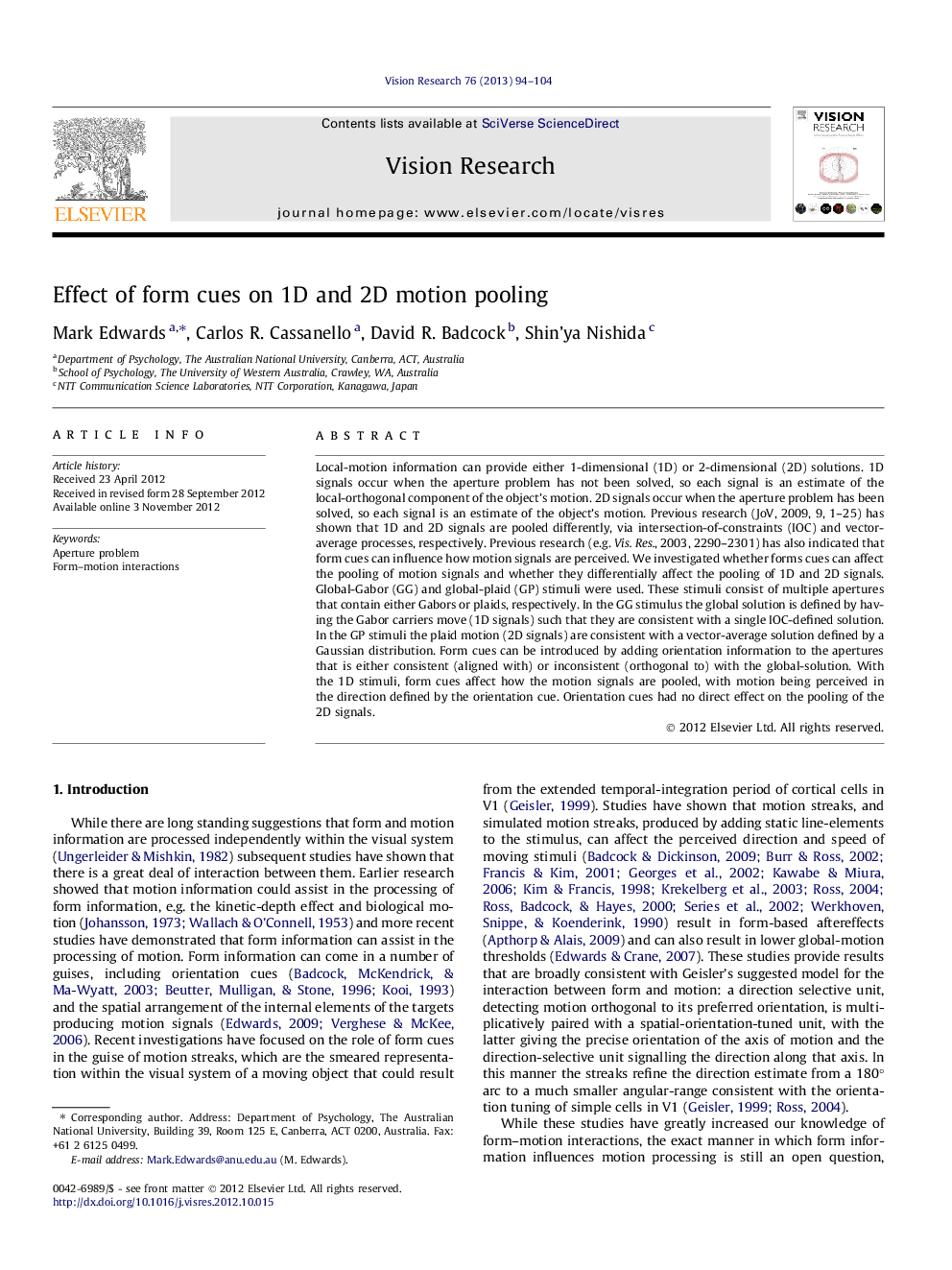| Article ID | Journal | Published Year | Pages | File Type |
|---|---|---|---|---|
| 6203638 | Vision Research | 2013 | 11 Pages |
Local-motion information can provide either 1-dimensional (1D) or 2-dimensional (2D) solutions. 1D signals occur when the aperture problem has not been solved, so each signal is an estimate of the local-orthogonal component of the object's motion. 2D signals occur when the aperture problem has been solved, so each signal is an estimate of the object's motion. Previous research (JoV, 2009, 9, 1-25) has shown that 1D and 2D signals are pooled differently, via intersection-of-constraints (IOC) and vector-average processes, respectively. Previous research (e.g. Vis. Res., 2003, 2290-2301) has also indicated that form cues can influence how motion signals are perceived. We investigated whether forms cues can affect the pooling of motion signals and whether they differentially affect the pooling of 1D and 2D signals. Global-Gabor (GG) and global-plaid (GP) stimuli were used. These stimuli consist of multiple apertures that contain either Gabors or plaids, respectively. In the GG stimulus the global solution is defined by having the Gabor carriers move (1D signals) such that they are consistent with a single IOC-defined solution. In the GP stimuli the plaid motion (2D signals) are consistent with a vector-average solution defined by a Gaussian distribution. Form cues can be introduced by adding orientation information to the apertures that is either consistent (aligned with) or inconsistent (orthogonal to) with the global-solution. With the 1D stimuli, form cues affect how the motion signals are pooled, with motion being perceived in the direction defined by the orientation cue. Orientation cues had no direct effect on the pooling of the 2D signals.
⢠We establish how form information affects the pooling of motion signals. ⢠Orientation information converts 1D signals into 2D signals. ⢠Occurs via a system sensitive to motion-steak information. ⢠Unlikely that end-point motion is used.
